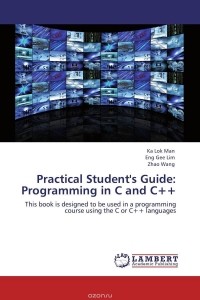Practical C

I start this blog series to show some of the trickier parts of C programming. In the first post, let’s implement the linear search in C. Integer Version Let’s imagine that we search on an integer array. Two things to notice here: • The function needs the array size n as a separate parameter. • Only the array’s address is passed in the function. Generic Basic Version Let’s write a more generic version that does not specify type. Here actually begins the interesting part of C: pointer manipulation.

Learn practical C techniques, including often-needed algorithms within reusable functions. In this book, you'll have the following code and advice at your.
First of all, in C there is no generics or templates like in Java or C++, the only solution is to use void *, which means a pointer to no matter what. Let’s look at the function’s parameters. • void *key: a pointer to the key. • void *base: the array. • n: size of the array.
• elemSize: the number of bytes each element in the array has. Try to form the picture below in your mind. The most difficult part here is how to iterate over the array. Pointer arithmatic does not work because that void * has no information about size and type. So here we have to do a hack.
First we cast the void *base to a char *. Since char is always 1 byte, so this makes base a pointer to a 1 byte char. To move forward i elements, the base needs to move i * elemSize bytes.
To compare the key and the current element in array. We just compare the bit pattern in memory using memcmp function. There is a problem with this approach, it does not work with an array of pointers. For example an array of C strings. True Generic Version To solve the above problem, we have to tweak the implementation a little bit.
The code can be super confusing if you don’t truly understand pointer in C. But let’s tackle this little by little. First, we can see that the main difference is that the lsearch function now takes a function pointer cmp. This is not unfamiliar if you come from other OOP language like Java. The body of the lsearch remains mostly the same, except that now it uses the cmp function to compare two pointers instead of directly comparing the memory bit pattern.
The tricky part lies in writing the compare functions themselves. Let’s look at the simpler one first, IntCmp. It casts the void pointers to int pointers. And then dereference them and minus one from the other. Pretty straightforward.
Now let’s take a look at the StrCmp which is supposed to compare two strings. Be careful that the void pointers here needs to be casted to pointers to char *s.
And then dereference them, to get char *s, and then use the strcmp in C library to compare two strings. 
• Category • • •.
There are lots of introductory C books, but this is the first one that has the no-nonsense, practical approach that has made Nutshell Handbooks® famous. C programming is more than just getting the syntax right. Style and debugging also play a tremendous part in creating programs that run well and are easy to maintain. Practical C Programming teaches you how to create programs that are easy to read, debug, and maintain. Practical rules are stressed. For example, there are fifteen precedence rules in C (&& comes before comes before?:). The practical programmer reduces these to two: • multiplication and division come before addition and subtraction Electronic Archaeology, the art of going through someone else's code, is also described.Topics covered: - Good programming style - C syntax: what to use and what not to use - The programming environment, including make - The total programming process - Floating point limitations - Tricks and surprisesIn this second edition, program examples conform to ANSI C.